Today is World Wildlife Day, and if you’re wondering, yes, I did spend it with wildlife—as well as, the wild Kapaa traffic, too.
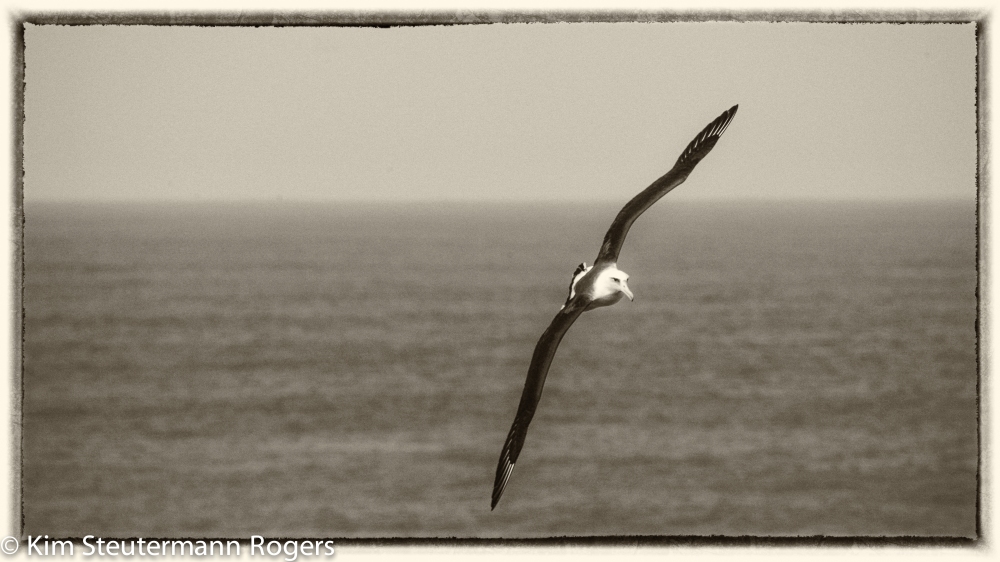 But if you’re thinking I hung out with Laysan albatross, no, I surveyed those majestic seabirds on Tuesday.
But if you’re thinking I hung out with Laysan albatross, no, I surveyed those majestic seabirds on Tuesday.
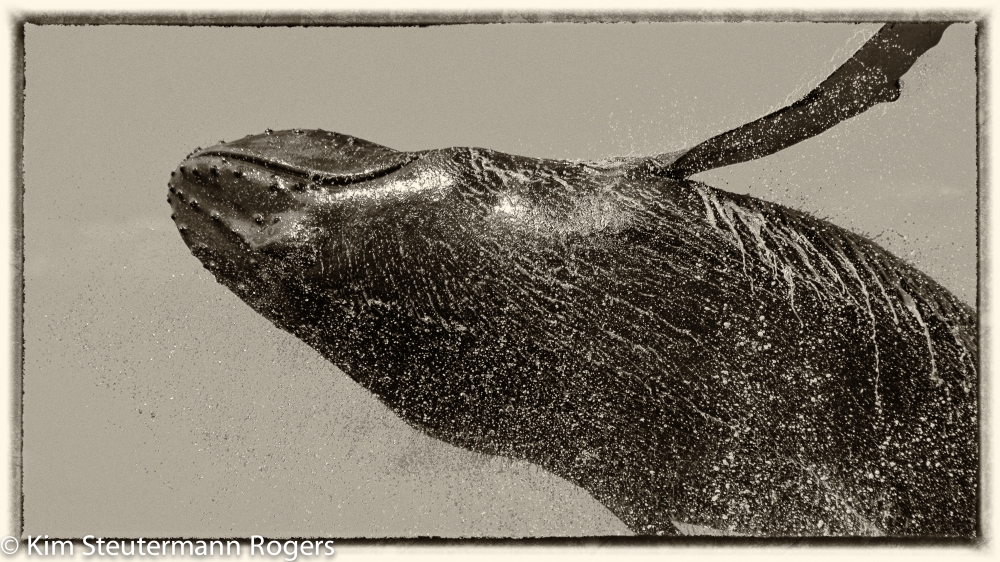 And if you’re thinking it’s winter in Hawai‘i, and that means Humpback whales are breaching and cavorting around the islands, you’d be right in that. But I didn’t hang out with them today. I did that on behalf of the Hawaiian Islands National Marine Sanctuary this past Saturday.
And if you’re thinking it’s winter in Hawai‘i, and that means Humpback whales are breaching and cavorting around the islands, you’d be right in that. But I didn’t hang out with them today. I did that on behalf of the Hawaiian Islands National Marine Sanctuary this past Saturday.
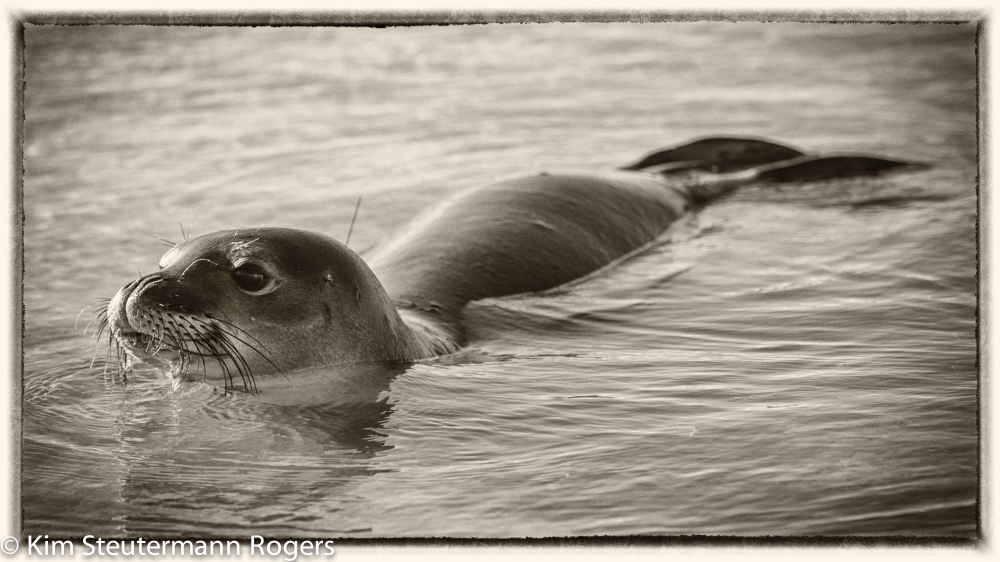
Ah, you think, that leaves the endangered Hawaiian monk seal. Yes, I will be checking on a big, old girl later this evening, but I spent the morning with some new-to-me Hawai‘i wildlife, and I got to traipse through the beautiful valley of Hanalei among taro fields to do so.
Meet the Hawaiian moorhen. Or `alae`ula.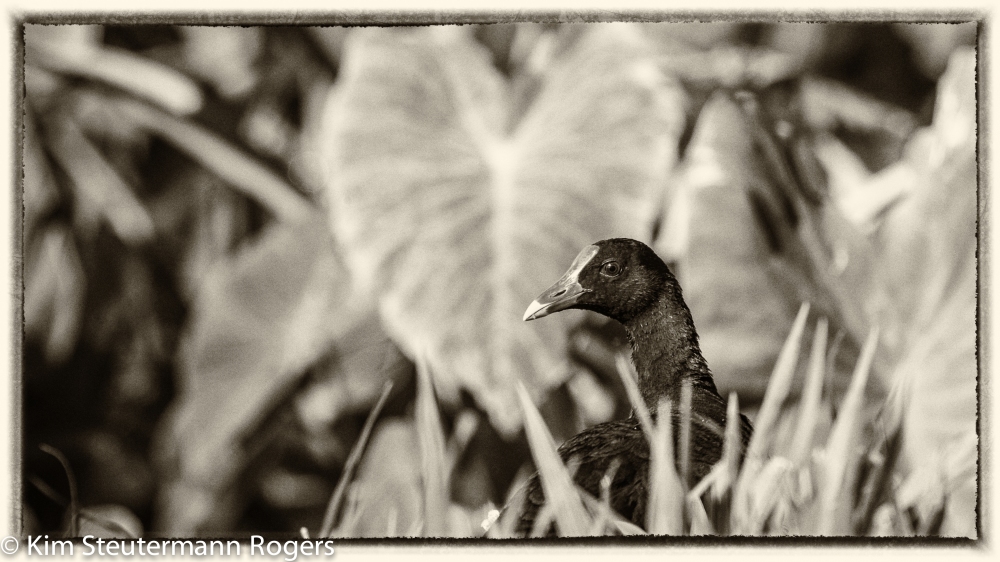
Meet the Hawaiian coot. Or `alae ke`oke`o.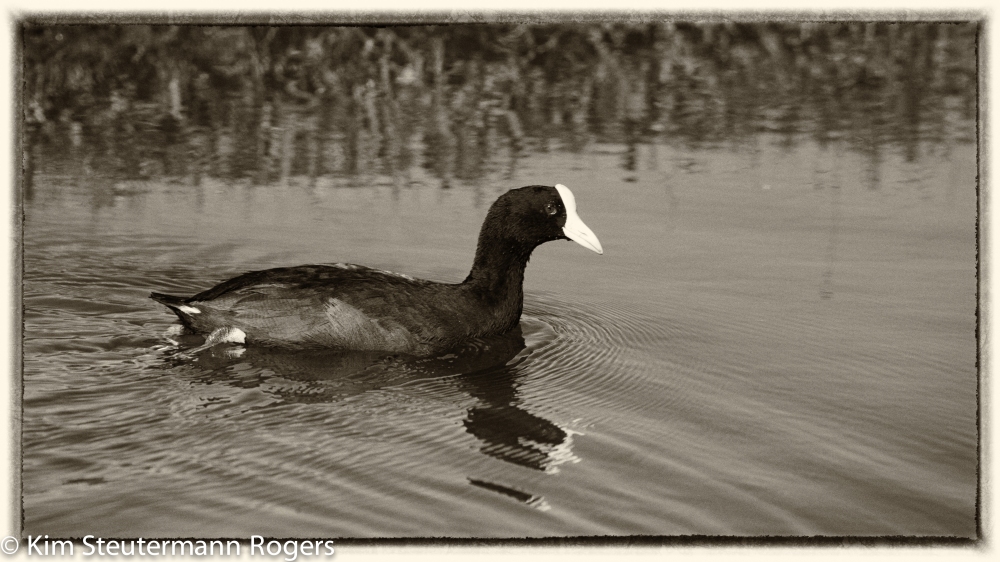
Meet the Hawaiian stilt. Or ae`o. (Photo to come.)
Meet the Hawaiian duck. Better known as the koloa maoli. (Photo to come.)
And, of course, the Hawaiian goose. Better known as nēnē.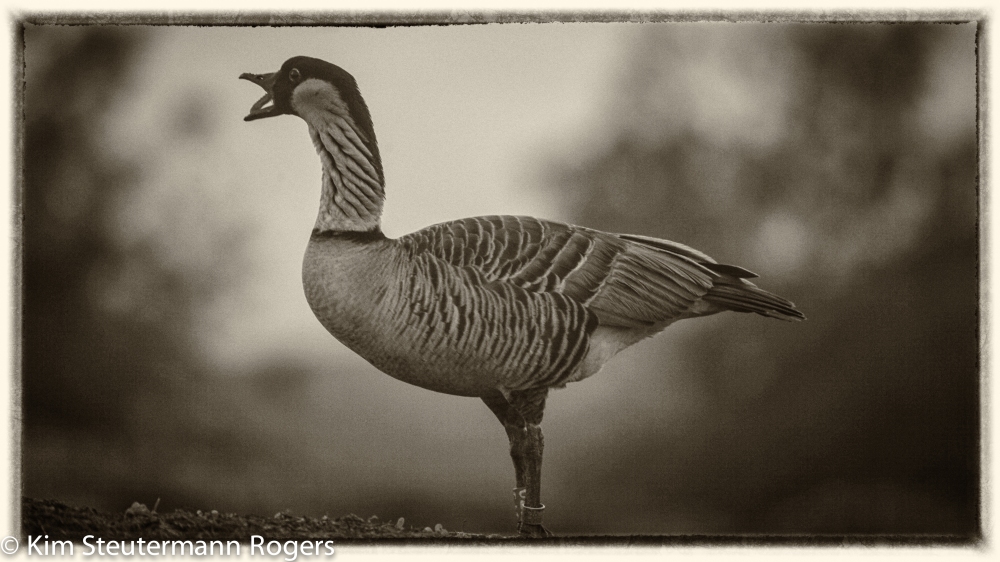
My knowledge base does not run as deep for these wetland birds as that of the seabirds and marine mammals with which I usually spend time, but I’m learning. Here’s what I know thus far. The Koloa are skittish and take to the air easily. The stilts are squawky and take to vocalizing easily. They also like the taro ponds that are fallow and half-drained of water. But the shy moorhen and coots scuttle for the protection of the big, leafy taro of mature growth taro ponds. And the nēnē? Well, they’re the easiest going of all the wetland birds.
None of these birds migrate, and they’re all protected by the Endangered Species Act. As ground nesting birds, they are all threatened by the usual suspects–cats, dogs, rats, and pigs. Plus, a nasty toxin called botulism that naturally occurs in soil.
Warm temperatures, a protein source, and an anaerobic environment can create a hot spot for botulism. Which pretty much describes what you’ll find in Hawai‘i’s taro fields. Say a fish or frog or bird dies. Nature’s decomposers—flies, maggots, and such—rush in to do their job. Koloa maoli are particularly susceptible to botulism. As they nosh on the maggots, they ingest the toxin. Whereas, the toxin is benign in invertebrates, it can be deadly in birds. My role is to find any sick and dead birds—anything dead, for that matter—and remove them from the environment. If caught early, the birds can be saved. Sadly, though, botulism is a fast-acting killer.
Luckily, in three months worth of weekly surveys, I’ve only collected two sick birds. But I’ve also collected a few smelly and dead frogs. Thank goodness for latex gloves!
In learning about the fauna, I am also learning about the flora—taro, or kalo. And that the men and women who work these fields are some of the most dedicated and hardworking people I’ve met. They’re knee-deep in muddy water before I arrive for my survey and are still remaining when I leave. They work in the harsh beat of the sun, and the drenching rain. They are also caring individuals. One told me his favorite weather conditions are a combination of sunny and rain. This is the same man who one day walked nearly the length of the valley to find me and tell me he’d found a sick bird. Then, kindly walked me back to it.
I hope this World Wildlife Day finds you enjoying a bit of the wild in your neck of the woods. Now, I’m off to check on that Hawaiian monk seal.

Time and time and TIME again — I am struck by the oh-so-accessible tone of your writing. It’s delightful! It’s like you’re chatting with a friend, and you chat about such INTERESTING things! You make it so easy to take in what you have to say. Your writing is always so enjoyable to read. Thank you! (p.s. A day late, but taking my class on a wildlife field trip tomorrow…. 🙂 )
LikeLike
Any day for a wildlife field trip is a good day, if you ask me! And thank you for your kind words. It’s always nice to know when people appreciate my writing. Cheers!
LikeLike
Very nice post. And a happy World Wildlife Day to you, too!
LikeLike
Mahalo!
LikeLike
Wonderful! mahalo for a wonderful post – love learning more about my home from you.
LikeLike
This is a great home about which to always learn! Thanks for reaching out.
LikeLike
Another interesting post. B&W photos a nice change from color. I can imagine myself with you while reading the story. Mahalo
LikeLike
Thanks, David. I decided to try a theme with the photographs, because, honestly, I wasn’t all that happy with a few of them;-)
LikeLike